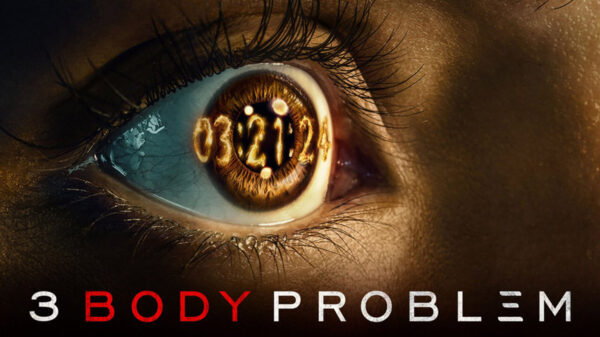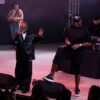On September 22 2003, Adelaide hip-hop group the Hilltop Hoods released The Calling.
They had been making music for over ten years, but this, their third full-length album, would be their first to have mainstream success.
They hoped to sell 3,000 records. Those expectations were quickly eclipsed.
The album was launched with a sold-out show at Planet nightclub. Two tracks (The Nosebleed Section and Dumb Enough) gained significant radio play. The Hoods used this publicity to grow their fanbase through touring.
They became the first Australian hip-hop artists to reach gold status, selling 35,000 copies. By 2006, it was platinum: 70,000 copies sold. Since 2003, all of the Hoods’ albums have reached platinum or higher.
Twenty years since its release, The Calling is still a mainstay on “best of” Australian hip-hop lists.
Rapper Briggs describes the album as “the icebreaker”:
This opened the door for the possibilities. It wasn’t a piss-take, it wasn’t anything but real hip-hop music.
Bringing hip-hop to Australia
Today, the Hoods are one of the most successful music acts in Australia.
In 2022, they were the third-most-streamed Australian artist on Spotify behind The Kid Laroi and the Wiggles. This year, they have toured Australia, the UK and Europe with many shows selling out – as have all their upcoming shows in Aotearoa New Zealand. In January, they had their 23rd entry into the Triple J Hottest 100 – taking the mantle for most entries ever from Powderfinger and the Foo Fighters.
Rewind to the 1990s. The Hoods were performing at parties and small venues as part of Adelaide’s underground hip-hop scene. Hip-hop was decidedly unpopular. Australians (especially white Australians) who produced or consumed it were often the target of jokes both from peers and in the media.
Hip-Hop was created by people of colour in New York in the 1970s. The genre had a short boom in Australia in the early 1980s, when young people learnt about it through American media, travel and migration.
Australians were introduced to hip-hop culture as a package made up of the “four elements“: MCing (or rapping), DJing, breaking and graffiti. Breaking and graffiti were immediately taken up in Australia, but it took more time for young people to start recording music.
Still, the culture was often defined by the media as a novelty and dismissed as “too American”.
Def Wish Cast from western Sydney was established in 1989. They were one of Australia’s first major hip-hop groups and their pioneering music inspired others – including the Hilltop Hoods when they formed in suburban Adelaide in 1996.
Forging a path
By the early 2000s, there were signs the cultural cringe connected to Australian hip-hop was lessening. The first ARIA awards for hip-hop music went to 1200 Techniques’ Karma in 2002, two years before the ceremony had a category for Best Urban Album.
But hip-hop music still struggled for support from major record companies, radio producers and the general public. Artists had to hustle to promote themselves. Hip-hop practitioners took on roles as managers, journalists and record label owners to create their own opportunities.
The Calling was the Hoods’ first release through independent label Obese Records. It ranges from politically conscious to party anthems. The title track compares hip-hop to a religious vocation: the lyrics suggest the Hoods have been called to be hip-hop artists in the same way that other people are called by their faith.
Other tracks on the album are more light-hearted. The battle-rap-inspired Dumb Enough calls out anyone “stupid” enough to challenge the Hoods; The Certificate is a rowdy posse track involving the Hoods and other members of Adelaide collective Certified Wise.
The Hoods’ breakout song was The Nosebleed Section, which came ninth in Triple J’s Hottest 100 in 2003 and 17th in the Hottest 100 of All Time in 2009.
Producer and DJ Rob Shaker said the song “changed the landscape of hip-hop in this country”. Mark Pollard, founder of Australian hip-hop magazine Stealth, told me the Hoods were “national icons” who “helped turn an amateur industry into a cottage industry into a professional industry”.
As well as paving the way for future artists, the song and the album were an entry point for new fans, who then learnt about other local artists, such as Muph & Plutonic, Bliss n Eso, Layla, Drapht and Downsyde.
Following the calling
The success of The Calling meant the Hoods could quit their day jobs and concentrate on music full-time. In turn, other artists were able to imagine a future where hip-hop was their career.
But the band wasn’t without controversy. For some commentators, their success signalled how hip-hop was being connected to a white patriotic Aussie identity. Radio host and record producer Hau Latukefu says this new wave of hip-hop fans did not “understand – and respect – that hip-hop is a Black art form”.
Australia’s hip-hop industry has also been called out for racism within the scene. It is only now that hip-hop artists from diverse backgrounds – who have always played a key role in Australia’s hip-hop community – are achieving more mainstream success.
The industry is changing in other ways. Journalists and artists themselves are now having open conversations about the historical marginalisation of women, non-binary and trans artists.
In the past few years, new podcasts, autobiographies, graffiti books and documentaries have emerged telling hip-hop stories from different perspectives.
Members of the scene are looking back on the past and thinking about what the future of hip-hop in Australia might be. The Hoods themselves continue to release new music, including songs like Show Business that reflect on their experiences in the industry. Hip-Hop culture in Australia continues to thrive as new generations are answering the calling.
Written by Dianne Rodger, Senior Lecturer in Anthropology, University of Adelaide
This article is republished from The Conversation under a Creative Commons license. Read the original article.
![]()
5 Ways to Support HipHopCanada:
- Submit Your Music
- Follow Canadian Fresh (HipHopCanada’s Spotify Playlist)
- Follow us on Instagram
- Follow us on X (Twitter)
- Like us on Facebook















































